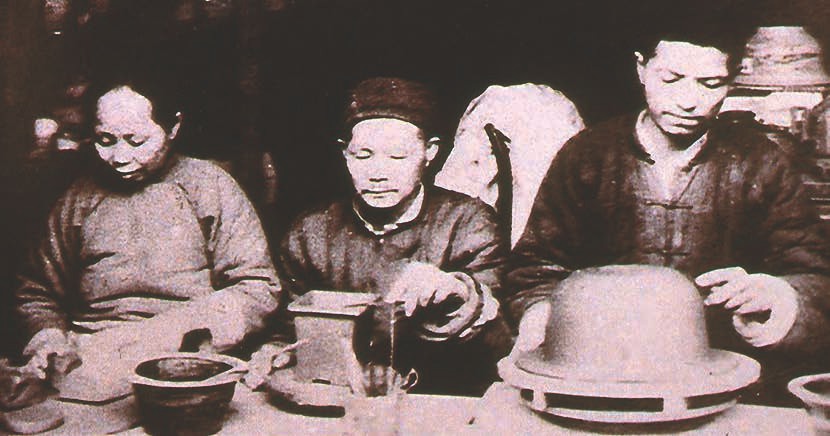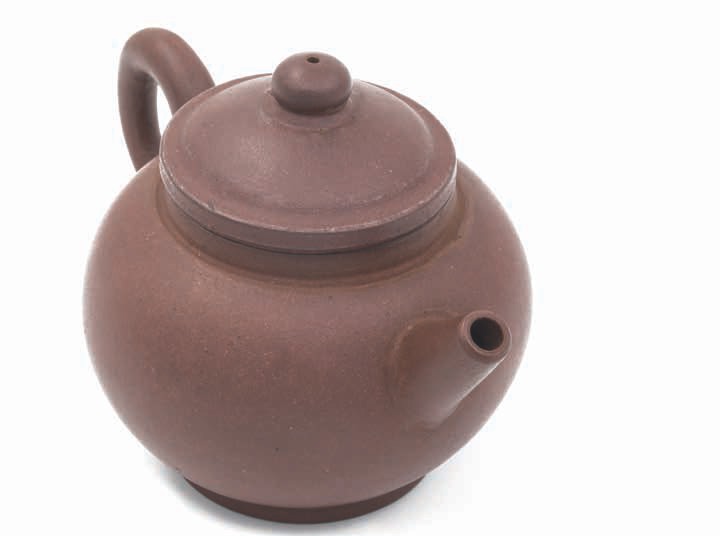
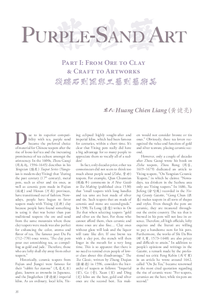 |
|
Due to its superior compatibility with tea, purple sand became the preferred choice of material for Chinese teapots after the rise of loose-leaf tea and the increasing prominence of tea culture amongst the aristocracy. In the 1600s, Zhou Gaoqi (周高起, 1596 - 1645) describes in his Yangxian (陽羨) Teapot Series (Yangxian is modern-day Yixing) that "during the past century (17th century), metal pots, such as silver and tin ones, as well as ceramic pots made in Fujian (福建) and Henan (河南) provinces, have transitioned out of fashion. Nowadays, people have begun to favor teapots made with Yixing (宜興) clay because people have found something in using it that was better than past traditional teapots: the ore and sand from the same mountain where these clay teapots were made was also perfect for enhancing the color, aroma and flavor of tea. The famous poet Du Fu (712 - 770) once wrote, 'The clay pots pour out astonishing tea, as compelling as gold and jade.' Therefore, those who are lofty shall shy away from other teapots."
Historically, ceramic teapots from Fujian and Jiangxi were famous for their "rabbit fur tianmu" (兔毫天目) glaze, known as tenmoku in Japanese, and the Jingdezhen (景德鎮) imperial kilns. As an ordinary, local kiln, Yixing eclipsed highly sought-after and imperial kilns, which had been famous for centuries, within a short time. It's clear that Yixing pots really did have a big advantage for so many people to appreciate them so vocally all of a sudden!
In fact, only decades prior, other tea connoisseurs did not seem to think too much about purple sand (Zisha, 紫砂) teapots. For example, Qian Chunnian (錢椿年) comments in A New Guide to Tea Making (published circa 1530) that "small teapots with long handles and tea urns are best made of silver and tin. Such teapots that are made of ceramic and stone are second-grade." In 1590, Tu Long (屠隆) writes in On Tea that when selecting teapots "gold and silver are the best. For those who cannot afford them, then ceramic and stone ones are also fine... Clay ones without glaze will leak and the liquor will taste like dirt. If one brews tea with a clay pot, the stench will then linger in the mouth for a very long time. This is so apparent that there is no need to remind even people of lower class about this disadvantage." The Tea Classic, written by Zhang Deqian (張謙德) in 1596, considers the hierarchy of teapots as follows: "Imperial (官), Ge (哥), Xuan (宣) and Ding (定) kilns are the best, gold and silver ones are the second best. Tea makers would not consider bronze or tin ones." Obviously, these tea lovers recognized the value and function of gold and silver teaware, placing ceramic second.
However, only a couple of decades after Zhou Gaoqi wrote his book on Zisha teapots, Zhou Rong (周容, 1619 - 1679) dedicated an article to Yixing teapots, "On Yangxian Ceramic Teapots," in which he claims: "Nowadays, tea drinkers in the Suzhou area only use Yixing teapots." In 1686, Xu Jiefeng (徐喈鳳) recorded in the Yixing County Gazette, "Gong Chun (供 春) makes teapots in all sorts of shapes and styles. Even though the pots are ceramic, they are treasured throughout the entire country. The tea that is brewed in his pots will not lose its essence. Therefore, all high officials, lofty esquires and the literati are willing to pay a handsome sum for his pots. Furthermore, the works of Shi Da Bin (時大賓, 1573 - 1648) are also pricey and difficult to attain." In addition to people's opinions and writings in the Gazette, a remark made by the professional tea critic Feng Kebin (馮可賓) in an article he wrote around 1642, called "On Jie Tea," became renowned as the most cited quotation regarding the rise of ceramic ware: "For teapots, ceramics are the best, while tin pots are second."
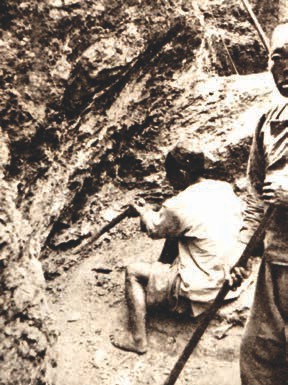
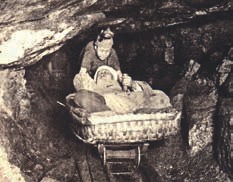

Even though there is more than one region where such ore deposits are found, Yixing is the only area with ore suitable for making teapots. Furthermore, Purple-Sand ore is not found everywhere in Yixing. The strata the ore is mined from are only found several hundred meters below sea level. Such deep mining is dangerous; if it wasn't for the high demand for Zisha teapots, mining would not have been worthwhile and Chinese tea culture would have developed along different lines.
The Commentary on the Jing River, written in 1583 by Wang Zhideng (王 稺登), describes the strata of ore as "tall planks among the plateau, which were partially drilled into a reclining slope (for mining)." The strata are composed of thin slabs, ranging from a few decimeters up to one meter thick, and are rarely found in clusters. As a result, the article Yangxian Teapots explains, "Purple-Sand ore can be found in various mountains, but the mines must be dug in many locations. Oftentimes, the ore is depleted just as another source of ore is found in a new location. Regardless, all the ore is found several meters underground." Wu Meiding (吳梅鼎, 1631-1700) composed a poem entitled "Ode to Yangxian Teapots" that illustrates how "[one had to] dig deep down for several meters until one hit bony rocks, such as those found higher in the mountains." In other words, mining Purple-Sand clay is as difficult as mining coal from deep underground.
There are many kinds of ore used in making Zisha teapots, such as the yellow or white duanni deposits that are four to five meters above sea level. The Illustrated Study of Yangxian Sand Teapots, co-authored by Li Jingkang (李景康) and Zhang Hong (張虹) in 1937, states that "During the Ming Dynasty (1368 - 1644), it had already been several centuries since the mining of Zisha ore had begun. After a mountain was depleted of its ore, miners would have to look for suitable clay in other mountains. As the origins and materials present in different ores varied from mountain to mountain, each ore's properties were also different, and hence, the appreciation of teapots had to follow suit, changing as the ore changed."
Out of the various ores found in the Yixing area, Zisha is the most suitable for making pottery, since it is strong and can be made into a vessel by itself, without adding any other material. In addition to its perfect combination of elements and metals, and having this preferred configuration in the right amounts, more than 350 million years of maturation has made Zisha ores extremely stable. As a result, it has a high plasticity, a high success rate in making pottery and low shrinkage after firing, making Zisha the preferred choice of Yixing potters. These qualities allow craftsmen to form the clay into any desired shape. Compared with clay found in other areas, the iron content in Purple-Sand clay is much higher, with an average of 8 - 10%, though some Zisha clays can even reach an iron content of 11 - 12%. Consequently, the colors after firing range from iron-red to a dark "liver" color and from the color of a light brick to that of a "frozen pear."
Due to its characteristics, Purple-Sand clay has been referred to as "the clay in clay and the rock within rocks." It is called "purple sand" because of the purple, green, yellow, white, black and/or red sediments or grains in the clay. Among the three main categories of clay (zisha/zini, hongni and duanni), zini is the most popular, and is, therefore, what most teapots are made from. Zini ore is usually hidden under yellow (duanni) ores and between layers of muddy clay (甲 泥礦層); hence the nickname, "the clay in the clay and the rock within rocks."
The ore takes on different hues according to the differences in temperature it is exposed to resting for hundreds of millions of years within its environment deep underground. Some people refer to red clay as "shihuang (石黃, literally, "stone yellow")," because this specific ore is usually located at the bottom of the mine and is as hard as stone. A Record of Famous Pottery in Yangxian describes it as "a bony stone that has never seen the wind and sun." It usually turns a vermilion reddish color after firing that is called zhuni (朱泥, literally, "vermilion clay"). It is high in iron, difficult to mine and low in supply.
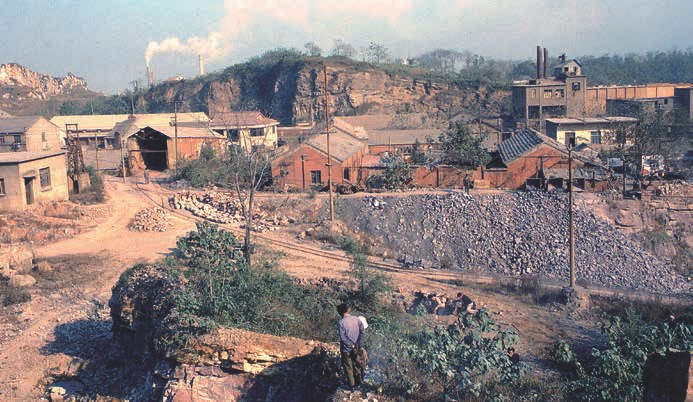
Starting in the 1950s, miners in Yixing found a specific kind of yellowish-green colored ore near the Chuanfu (川埠) and Fuding (洑東) areas of Yixing. This kind of powdery clay works like the hard-to-find shihuang red clay and is referred to as "Little Hongni (小紅泥)" or "Hongni Junior (紅泥 初)." Hongni does not require such high temperatures to fire, and it cannot be made into large-sized objects, as large pieces will change shape during firing. As a result, it is usually made into small objects or used as decoration on other objects. Hongni pieces were exported to Europe in the late 17th century, and small pots sold to Southeast Asia and Southern Fujian during this time were also mostly made from hongni.
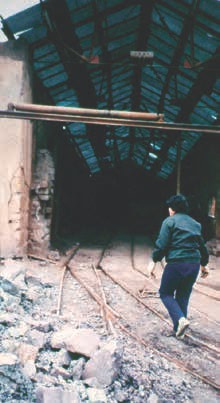
Genuine green clay (luni, 綠泥), sometimes referred to as "Original Mountain Green Clay (本山綠泥)," is green in its placer state and turns creamy yellow after firing, which is why it is classified as a kind of duanni. It is only found in sections between purple ore, and is thus referred to as "segmented clay" or "duanni (段泥)." Since green ore is only found in sections, the supply of this clay is also low. Therefore, it is mostly made into small objects or used as decoration and cosmetic layers on Zisha pieces.
Purple-Sand ore mined right out of a sedimentary layer is not ready to be made into any object yet, and is called "raw ore." It must be sun-dried and thoroughly broken into smaller pieces, then left outdoors for at least three years. The clay is then ground into a fine powder, sieved and mixed with water. The above process is carried out manually by the so-called "quarry workers (宕戶)," "the persons who make liquid clay (搪戶)" and the "miller who grinds the sandy rocks into fine powder (磨坊人家)," with the help of animals or grinders in the modern age. At this point, the clay can be made into blocks of different qualities for sale. However, potters cannot yet use these processed clay blocks to make anything. The potters first need to store these newly formed clay blocks in cellars that are sealed tightly, keeping out sun and airflow, in order to control the temperature and raise the humidity of the storage. This slow process of maturation, decomposition, and to some extent, fermentation changes the property of the clay - this process is called "cultivation (養土)." This procedure, from ore to clay, is recorded in A Record of Famous Pottery in Yangxian: "The potters dig a big hole out in the open, allowing the colored earth to crumble. They grind and soak the powder, dry it out and then remix the powder with water again. Then, the prepared clay blocks are stored inside sealed cellars, which is termed 'cultivating the earth.'"
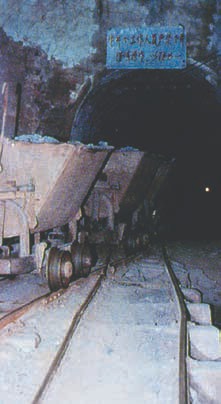
During the cultivation period, the water content in the clay blocks becomes more even. As a result, the organic substances decompose into components that make the clay more plastic and less likely to crack when fired. In general, it takes a minimum of one year to cultivate the clay. However, the longer the cultivation time, the better the final quality will be. Since the 14th century, potters in Yixing have learned to stock up on clay blocks and store them in cellars. When they acquire some clay that is of good quality, potters will culture the blocks for decades, never using the clay to make pots unless a great opportunity arises to make something special. Most clay producers and teapot makers feel that the longer the clay ages, the better.
According to chemical analysis, Purple-Sand ore can be more than 350 million years old, with a stable and preferred chemical composition, mineral content and grain size for making teapots. As a result, it can be made into teapots by itself, without any additives. It can be found underground in various areas, each in different amounts. All the raw materials harvested from different strata contain different amounts of elements, such as iron and other minerals. After using "various methods that would not be shared with other craftsmen," (secrets, in other words!) clay makers sort and process all the raw materials into clay blocks of various grades, textures and colors. Additionally, the clay manifests different colors due to different methods and temperatures of firing. The variety of ores, firing methods and temperatures are the reasons why Zisha pots show a spectrum of colors. A Record of Famous Pottery in Yangxian lists the wide range of colors of Zisha pots: "Earthen, yellow-colored clay... will turn vermilion colors after firing.... Clay of a sky-blue color... will turn a dark liver color after firing; while the pear-skin color of a neighboring ore will turn into a frozen-pear color. Clay of a light red color will turn a greenish-yellow after firing, and clay of a light yellow color will turn pea-colored. Light redcolored clay will turn a light brick color. When pear-skin-colored clay is mixed with white clay, it will turn a light ink-black color after firing." The wide spectrum of colors after firing clay made from Yixing purple-sand is something very different from all other types of clay in the world.
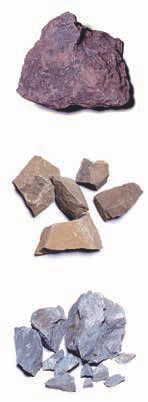
For potters, the following physical advantages, such as high success rate in forming pots, low contraction after firing and high plasticity, make Zisha a preferred material for making teapots of all imaginable shapes and incredible designs. In fact, this combination of outstanding properties, along with the ingenious craftsmanship of teapot makers in Yixing, is the reason why Purple-Sand teapots have become such an important part of the history of Chinese pottery and ceramics.
Traditionally, Zisha teapots are not glazed. As time goes by, a teapot's naturally smooth and luminous surface will gain more of a shine the more human connection it has, changing from the tea we brew and even from our hands. This is another special feature not seen in pottery crafted elsewhere, which requires glaze to create shiny surfaces. The artist and professor from the Central Academy of Arts and Crafts, Gao Zhuang (高莊) once composed a poem, in which he declares, "I am in love with Zisha, for it is void of glaze. It is as if one were wearing what's inside. It does not need any clothing to boost its value. It only relies on its own nature, and that's why I love it!" Without the enhancement or cover-up afforded by glaze, Zisha craftsmen must become extremely skillful in making smooth surfaces. This demonstrates how important craftsmanship and tools are in making Zisha teapots. Professor Li Yanzu (李硯祖) points out that "from the perspective of craftsmanship, the quality of tools influences the craft and could even lead to different methods in a craft."
In fact, the tools involved in making Zisha teapots are the most complicated of all pottery in China. By the mid-17th century, tools in Yixing teapot making had evolved into a standard of at least ten different tools, as Zhou Rong records in his book, On Yixing Ceramic Teapots. Potters employ these tools skillfully in hundreds of tedious procedures so that the shapes and curvatures of the pots are as perfect as heavenly pearls and jade. The most skillful of these craftsmen can match the lid to the mouth within a fine space of less than 0.5 mm, which is not possible with other materials. For other pots, such as a water urn, the average size of the gap between the lid and mouth is 1.5 mm. All famous potters in Yixing have been meticulous in matching the lid to the mouth. Chen Zhan (陳鱣, 1753 - 1817), in his Writings from the Pine Ink-Slab Studio, writes thus about Shi Da Bin's craftsmanship: "Even though one cannot lift the entire pot by only holding the lid, after the lid was put into the mouth, it would not budge at all. This shows that he was not famous for nothing." Due to his careful work, the lids of his pots could be put in from any random angle and the lid would always fit the mouth tightly. For pots with some specific patterns on the body, the lid will not only match the patterns but will also always fit in all angles tightly without any problem. To be able to always make pots in a perfect sphere freehand and match the lids and bodies with intricate patterns before the era of machinery certainly earns Shi Da Bin the title of Grand Master, not to mention the centuries of respect that have followed him. Zhang Yanchang (張燕昌, 1738 - 1814) once described a teapot by Shi Da Bin: "My late father was very fond of drinking tea. He once had a small teapot of an octagonal, floral shape, with Shi's signature on the side. No matter from which angle one put the lid on the mouth, [it would fit so tightly that] one could always lift up the entire pot afterward." Furthermore, the tighter the lid fits the mouth, the less likely it is that airborne bacteria will fall into the pot. This is the reason why tea left in Zisha teapots does not easily spoil, even if left steeping or as leaves for a long period.
Similar to other antiques, such as jade and furniture, the craftsmanship of the potter also makes an impact on the value of the item in addition to the materials used. In general, there are seven steps in making Zisha pottery: culturing the clay, making the shape, carving (decorations), bisque firing, refining the pot, second firing and cleaning, while the most important step is making the shape. The pots are not formed using a pottery wheel, but through very special techniques called "making the body" and "decorating the body." The former is employed to make spherical pots, while the latter is used in the process of making geometrical pots. When reviewing the history of crafts in China, it appears that the water jar makers of Yixing must have inspired the way potters make spherical pots.
Since the Song Dynasty (960 - 1279), these utilitarian, large-sized water jars have enjoyed much popularity, and the industry soared. The bodies of these water jars are thick-walled and made from compact materials. The material for these large water jars is not made from pure clay; instead, ground ore from deep underground is added to the clay. Since the desired size is too large for pottery wheels, the local water jar craftsmen developed a kind of slab method to form the water jars. By using large slabs of clay, the craftsman builds the body to a certain height, and then pounds the clay from both the outside and inside to make the body more round. While part of the body dries, the craftsman continues to pile slabs of clay onto the body of the jar. This procedure is typically repeated three times or more before forming the final shape of a water jar. This special slab method surely influenced the budding Zisha pottery industry. During the Ming Dynasty, Purple-Sand teapots were generally made by either pasting clay slabs or stacking sectioned, wooden molds onto stone. Once both the lid and bottom part of the clay body were set in their appropriate sections on the stone, the mold of the pot would then be removed. Afterward, the partially dried clay body was finished by adhering the sections together with wet clay.

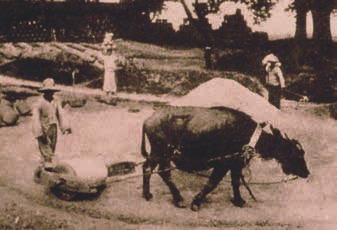
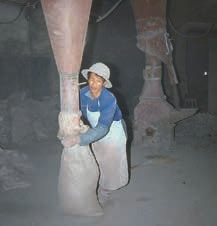
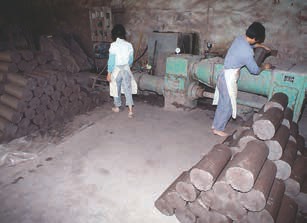
Alternatively, Shi Da Bin developed his own crafting method, which did not rely on the use of molds and brought back the use of small pottery wheels by combining it with a technique of pounding clay slabs on a wheel. In 1966, the only confirmed pot dating to the early 16th century was excavated from the tomb of an influential eunuch, Wu Jing (吳經, d. 1533), outside the Zhonghua Gate of Nanjing. I was fortunate enough to see it personally when I attended the Clay Teapot Academic Forum held by the Nanjing Museum in 2004. Scraping marks are visible on the outside of the spout, while appliqué decorations in the shape of persimmon petals have been applied to the base of the spout that connects it to the body of the pot. Even though the appliqué work is not delicate, the linearity of this section of the teapot has not been compromised. Though there are signs of scraping, scratching and cutting, the pot shows no sign of polishing performed with finer tools. While a trace of joining the sections together, between the upper and lower parts, can be detected in the middle of the body, the joint is not clearly visible from the outside of the pot. This method is recorded by Zhou Gaoqi in his Yangxian Teapot Series, describing how Gong Chun "would build the body in sections. As a result, a sign of horizontal joint would be visible in the middle of the body." The archaeological finding of this cane-handled teapot in Wujing's tomb exhibits a transition of craftsmanship in Purple-Sand teapots from the slab method inspired by the technique commonly used in forming large water jars, to its own method of slab pounding. Along with a reduction in the size of the pots over time, and the evolution of finer craftsmanship, potters discarded the molds of the early days and learned to do without joining the two sections of a teapot's body together. Instead, the craftsman holds the inside of the pot with his left hand while using his right hand to pound the clay body with tools. The body is then pounded into the desired curvature and gradually becomes a sphere as a result. This technique is the "pounding body method" now commonly used by Purple-Sand clay teapot makers.
The other method for making Purple-Sand teapots is employed to make four-sided, six-sided or eight-sided geometric-shaped pots. This method joins several clay slabs together to form the pot, and is inspired by the techniques used in making tin crafts. However, this method is actually a more difficult process than the previously mentioned method of slab pounding, because if any element is slightly off, such as the humidity of the slabs or their angles, the body will certainly collapse during the second, high-temperature firing (a firing that often involves temperatures higher than 1000 °C).
This tin-crafting technique influenced the Zisha industry after the 15th century. Take the teapot excavated from Wujing's tomb as an example: the craftsman made the spout of this teapot by first opening a hole in the belly of the pot, after the spout was attached to the hole, and then applying the persimmon petals to the base. These petals also serve as a decoration to cover the joint; on the other hand, the added pieces fortify the structure at the point where the spout joins the body. This method takes after the process used in forming metal crafts.


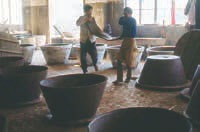
Two different ways of joining the spout to the pot were utilized in later periods. The first method directly adheres the two pieces together in a straight angle using slip (wet clay). The other method places a coil of clay onto the joint of the body, and then the excess clay is scraped off, resulting in a curve at the newly formed joint. With the help of these special techniques and tools, generations of Yixing potters have created teapots in a myriad of shapes and decorative styles. In his Ode to Yangxian Teapots, Wu Meiding writes that "the character 'cube (立方)' is merely a namesake, while 'sphere (球形)' comes in all shapes. Words can barely express these shapes, and this rhapsody cannot describe them either." Since all these various shapes were entirely made by hand, craftsmen required a variety of tools to achieve their intended designs. A record of Yixing ceramics from the 17th century, for example, claims that there are more than ten different kinds of bamboo blades alone for making Zisha pottery! Different kinds of tools were created for different purposes, and each tool comes in different sizes and angles. Therefore, it is not uncommon for any given potter to own more than one hundred tools for the sole purpose of making teapots! Traditionally, potters had to make their own tools. Thus, the first three years of being an apprentice to a potter were generally spent learning how to make tools and slabs of clay.

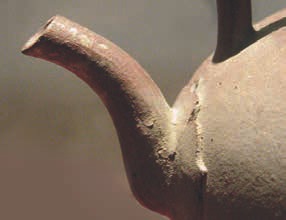
Another special feature of making Purple-Sand teapots is the "refining process." This process is the final cosmetic touch-up for the pot, and is considered one of the most crucial steps in making a teapot. Using tools, such as bamboo molds, "bright needles (明針)" and knives to scrape and smooth the clay repeatedly, the potter refines and tunes the shape and surface of the pot. "Bright Needles" are the key feature of this refining process. These so-called "Bright Needles" are thin ox-horn sheets that are tailored to fit any desired curvature after being soaked in water for a period of time. In addition, these sheets are also flexible enough that craftsmen can control the pressure from their fingertips.
Since glaze is not applied to Zisha pots, these advanced procedures are all the more important to the teapot making process. Since the matured sand grains in the clay are not unified in size, the surface of the clay will not be even. As a result, potters have invented all kinds of tools to press down the protruding particles so that the finished surface will be smooth. Furthermore, with the help of these "bright needles (ox-horn sheets)," the thin, moist layer on the surface of the body will form a tight and robust layer on the outside of the piece. Ode to Yangxian Teapots also alludes to this refining process: "After being used for a while, Zisha pots will become more and more glossy, reflecting other objects like mirrors. When they are taken out of the kiln, their value is no less than bronze (凝銅)." The entire clay slab is evenly made compact during the process. However, though the meticulous refining process seemingly makes no changes to the appearance, a glossy, smoothly fused layer will form on the surface of the pot after the firing. Therefore, even though glaze is never applied to the pots, they are shiny after firing and become even more luminous with proper care and seasoning. More importantly, these advanced processes pressurize the surface and make the pores bigger inside the pot when compared to the smaller pores formed on the outside, which is advantageous for encouraging the color, fragrance and flavor of the tea prepared in a Zisha pot; which is, after all, the real reason for all this art and craft. Centuries of work and craft, heart and soul to honor the Leaf. A teapot can take weeks or even months to create, but it is then enjoyed for a lifetime. Sometimes, teapots are cared for as treasures and handed down generationally. Many tea lovers appreciate antique teapots, claiming they make better tea, which means that some pots are still in use even centuries after they were crafted.
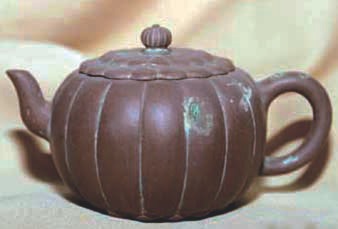


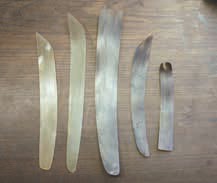
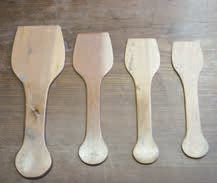
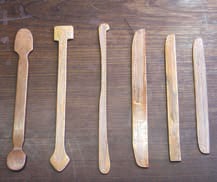
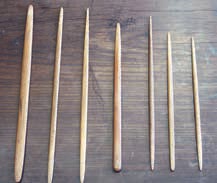
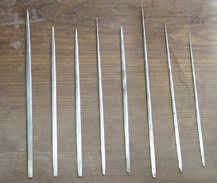
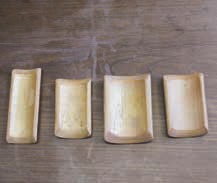
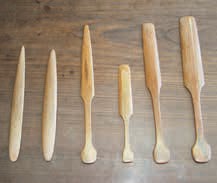
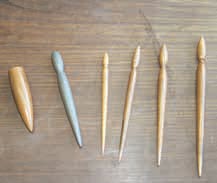

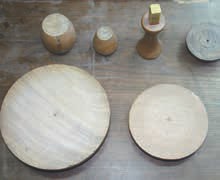
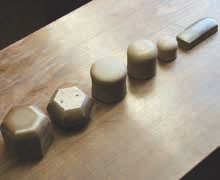
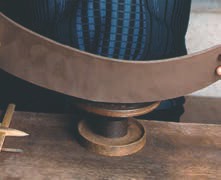

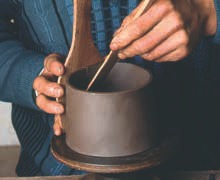
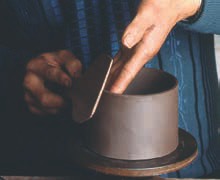
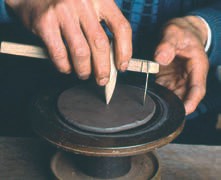
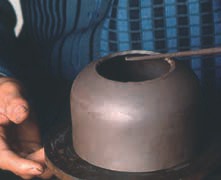
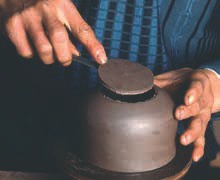
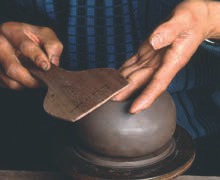
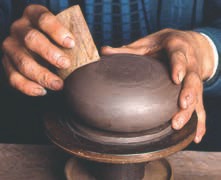
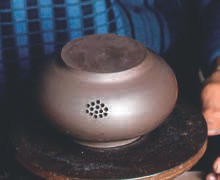
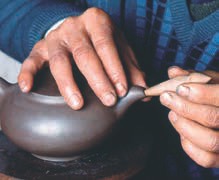
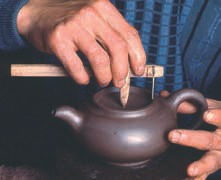




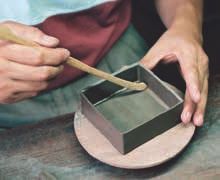
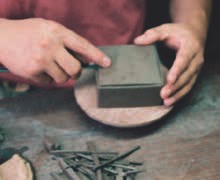


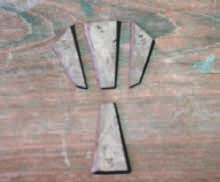
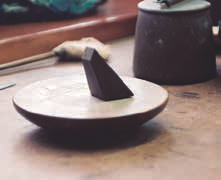

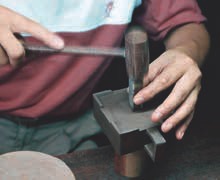
Throughout this issue, you will hear the name "Shi Da Bin (時大彬)" quite often, and that is because one cannot have a discussion of Yixing art without his name coming up. After Gong Chun (供春), he is perhaps the most important teapot maker. Shi Da Bin was born into Yixingware. His father, Shi Peng, was also a great master. Apparently, historians have traced the Shi family back to the Song Dynasty (960 - 1279). He may have been born in 1567, but no one is sure. He copied the works of Gong Chun (供春) until he eventually developed his own style. His methods of creating pots and the styles he produced influenced Yixingware from then until now. Even during his lifetime he became incredibly renowned. He was commissioned to make pots for several officials of high rank and is mentioned in tea literature, including the Ming Dynasty (1368-1644) classics we translated in April of this year.
Hui Meng Chen (惠孟臣) is another constellation in the Yixing sky. He lived in the late Ming Dynasty. He is acclaimed as the father of modern Yixing teapots, because he is said to be the first master to make smaller pots for the emergence of gongfu tea brewing in the South, designing nice pots for oolong preparation. Many masters from then till now have signed their pots with his name in honor of the heritage to which they belong. As unknown craftsmen, they embody the spirit of Tea, offered freely without returns.
After Hui Meng Chen comes another of the great heroes of Yixing, whose name also has adorned thousands of pots, and after Gong Chun and Shi Da Bin, he is probably the most well-known Yixing artist of all time: Chen Ming Yuan (陳鳴遠). Chen lived in the early Qing Dynasty. He was very innovative, creating many new styles of pot. He refined the art, adding more detail and flair to pots, in some ways heralding the artistic era of Yixingware.
As the literati of China became more and more interested in Yixingware in the Qing Dynasty (1644 - 1911), the art began to change rapidly, influenced by calligraphy, metalwork, scholarly desktop objects and other designs favored by the aristocracy. During the Jia Qing and Dao Guang reigns (1796 - 1850), a large group of scholars led by Chen Man Sheng (陳曼生) worked to elevate Yixingware to a new level by making pots that combined poetry, calligraphy, seal-carving and pottery - all of the scholar's favorite arts. Shao Da Heng (邵大亨) was one famous potter from the period who participated in these changes. He is amongst the most influential of all early Yixing craftsmen.
